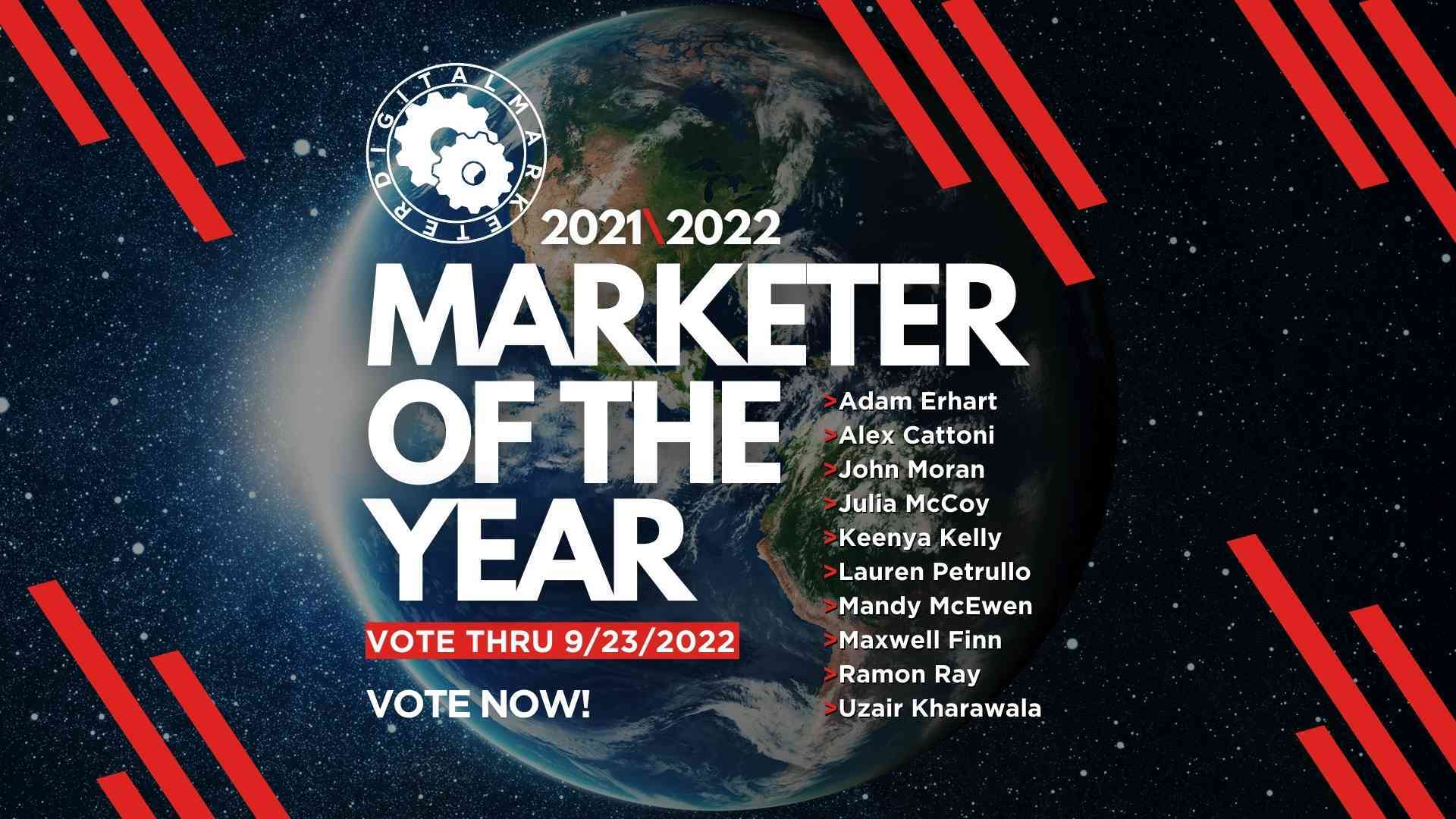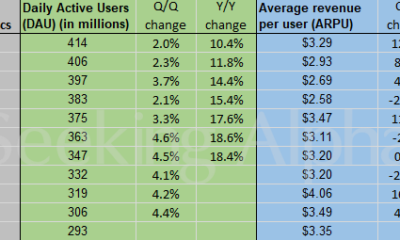MARKETING
DigitalMarketer Marketer of the Year 2021/2022

Who has been the most influential marketer for you?
These 10 candidates were nominated by the DigitalMarketer Community, a vast network of over 120,000 marketers and agencies that work tirelessly to create and practice the most effective methods in modern marketing.
- Adam Erhart
- Alex Cattoni
- John Moran
- Julia McCoy
- Keenya Kelly
- Lauren Petrullo
- Mandy McEwen
- Maxwell Finn
- Ramon Ray
- Uzair Kharawala
Voting ends September 23, 2022 – Vote Now!

Alex Cattoni is a copywriter, speaker, and the Founder of the Copy Posse; a global army of authentic copywriters with a passion for creating community, credibility, and conversions with nothing but powerful and precise wording. Alex has 10+ years experience in online marketing and branding. She is the Co-host of the Flight Club Mastermind and the creator of the Copy Posse Launch Pad Coaching Program.
DigitalMarketer Courses: Email Marketing Mastery

Uzair runs SF Digital Studios alongwith his wife Farzana. He is one of the very few professionals who is both a Google Partner & YouTube Certified.
His content is regularly featured on portals like SEMRush, Social Media Examiner, DigitalMarketer and he is also a keynote speaker at Traffic & Conversion 2022.
His YouTube channel has over 20,000+ subscribers and is one of the best channels to learn Google Ads.
He has been video marketing for the last 4 years and has uploaded more than 1,200 videos on YouTube.
DigitalMarketer Courses: Agency Scale Accelerator

Julia McCoy – The Content Hacker
Julia McCoy is an entrepreneur, author, and a leading strategist around creating exceptional content and brand presence that lasts online. At 19 years old, in 2011, she used her last $75 to build a 7-figure agency, Express Writers, which she grew to $5M and sold ten years later. She’s written six books, has impacted over 1M lives through her book Woman Rising, and her story has been featured on Forbes three times. In the 2020s, she’s devoted to running The Content Hacker, where she teaches creative entrepreneurs the strategy, skills, and systems they need to build a self-sustaining business, so they are finally freed up to create lasting legacy and generational impact.
Maxwell Finn is a serial entrepreneur and leading authority on TikTok & FB ads. Max has educated 10k+ and run ads for some of the biggest brands in the world.
Max has inspired and personally mentored dozens of startups in the past decade. He is passionate about helping everyday entrepreneurs succeed. Starting in 2018 his Facebook ad courses have generated millions in profit and helped over 10,000 marketers achieve tremendous success by mastering the platform.
DigitalMarketer Courses: How to Launch Your First TikTok Ad & Achieve Profitability Within 30 Days

Mandy McEwen is the Founder & CEO of Mod Girl Marketing, an award-winning digital agency. As a renowned speaker, trainer, content creator, and podcaster, Mandy has been named a Top 24 B2B Marketer by LinkedIn and a Top 20 Female Marketer by G2. Mandy and her world-class team increase social selling revenues for enterprise teams using LinkedIn and email.
DigitalMarketer Courses: How To 3X Your LinkedIn Exposure In Under 30 Days Without Ads

Ramon Ray – Zone of Genius
Ramon Ray is an in-demand expert on small business success and founder of SmartHustle.com.
He’s has started four companies and sold two of them and is a four-time author. Ramon’s latest book is “Celebrity CEO”, all about personal branding.
He’s a global keynote speaker, event host and emcee, entrepreneur, and best-selling author.
DigitalMarketer Courses: Celebrity Marketer by Growing Your Personal Brand

Keenya is the CEO of If You brand It, a marketing and consulting firm in San Diego, CA where she strategically helps business owners develop video marketing strategies Keenya decided to learn about the TikTok platform as a way to market her business during the pandemic. In just 2 years Keenya has grown her account to over 489,000 followers and has helped clients reach millions of followers as well. As a partner with the Keenya Kelly brand you will surely reach Keenya’s strong female audience of influencers and entrepreneurs.
John Moran is the Senior Client Strategist of Solutions 8, one of the world’s top ranked Google Ads agencies. Extensive qualifications in all aspects of full-funnel digital marketing including, design, content, paid traffic (PPC), SEO, CRO, KPI tracking, implementation, documentation and user training. Extremely motivated and enthusiastic with outstanding performance and professional growth, based a history of achievements and project success rates.
DigitalMarketer Courses: Paid Traffic Mastery

Lauren Petrullo is the CEO and Founder of Award Winning Marketing Agency, Mongoose Media LLC based in Orlando, Florida. She is also the Founder of boutique ecommerce store Asian Beauty Essentials, Chief Marketing Officer of eco-conscious baby swimwear Beau & Belle Littles, and co-founder of chatbot service Bot Blondes.
DigitalMarketer Courses: ECommerce Marketing Mastery

Adam Erhart – Adam Erhart Marketing
Adam Erhart helps businesses and service professionals double (or triple) their leads, customers, and sales so they can grow their businesses quickly, predictably, and sustainably.
With over a decade of experience in digital marketing, and a proven track record of ROIs that consistently and greatly exceed industry benchmarks, Adam helps install proven customer-generating digital marketing systems into his clients businesses.
DigitalMarketer Course – Profitable Marketing for People Who Aren’t Marketers (…yet)



















You must be logged in to post a comment Login